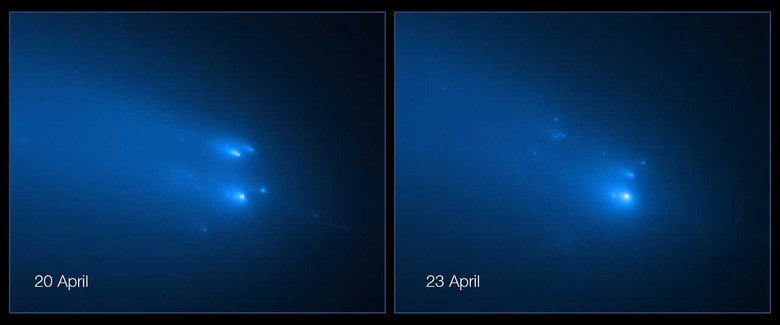Hubble Space Telescope Captures Images Of Comet C/2019 Y4 Breakup
The NASA/ESA Hubble Space Telescope has given astronomers the sharpest view yet of the breakup of a comet called Comet C/2019 Y4 (Atlas). Hubble was able to resolve approximately 30 fragments of the comet on April 20 and 25 pieces on April 23. The comet was first discovered in December 2019 by the ATLAS robotic astronomical survey system in Hawai'i.The comet brightened quickly until mid-March with some speculation that it might be visible to the naked eye in May. Some believe that it might be one of the most spectacular comets seen in the last 20 years. However, the comet abruptly began to get dimmer leading astronomers to speculate that the core could be fragmenting or disintegrating. The fragmentation was later confirmed by an amateur astronomer called Jose de Queiroz after photographing three pieces of the comet on April 11.

Hubble has now provided new observations of the breakup of the comet taken on April 20th and 23rd. Scientists say that the images provide further evidence that comet fragmentation is probably common and could be the dominant mechanism by which the solid, icy nuclei of comets die. Astronomers on the imaging team aren't sure why the comet's appearance changes so much over the three days of observations.
The team isn't sure if the individual pieces are flashing on and off as they reflect sunlight similarly to twinkling lights on a Christmas tree or because different fragments are appearing on different days. Astronomers say that what is so exciting about these images is that most comets that fragment are too dim to see. Fragmentation happens quickly and unpredictably, making reliable observations rare.
As for how the fragmentation happens, one suggestion is that the original nucleus of the comet spins itself into pieces because of the jet action of outgassing from sublimating ices. The team hopes that further analysis of Hubble data might be able to show if that mechanism is responsible for destroying this comet.
